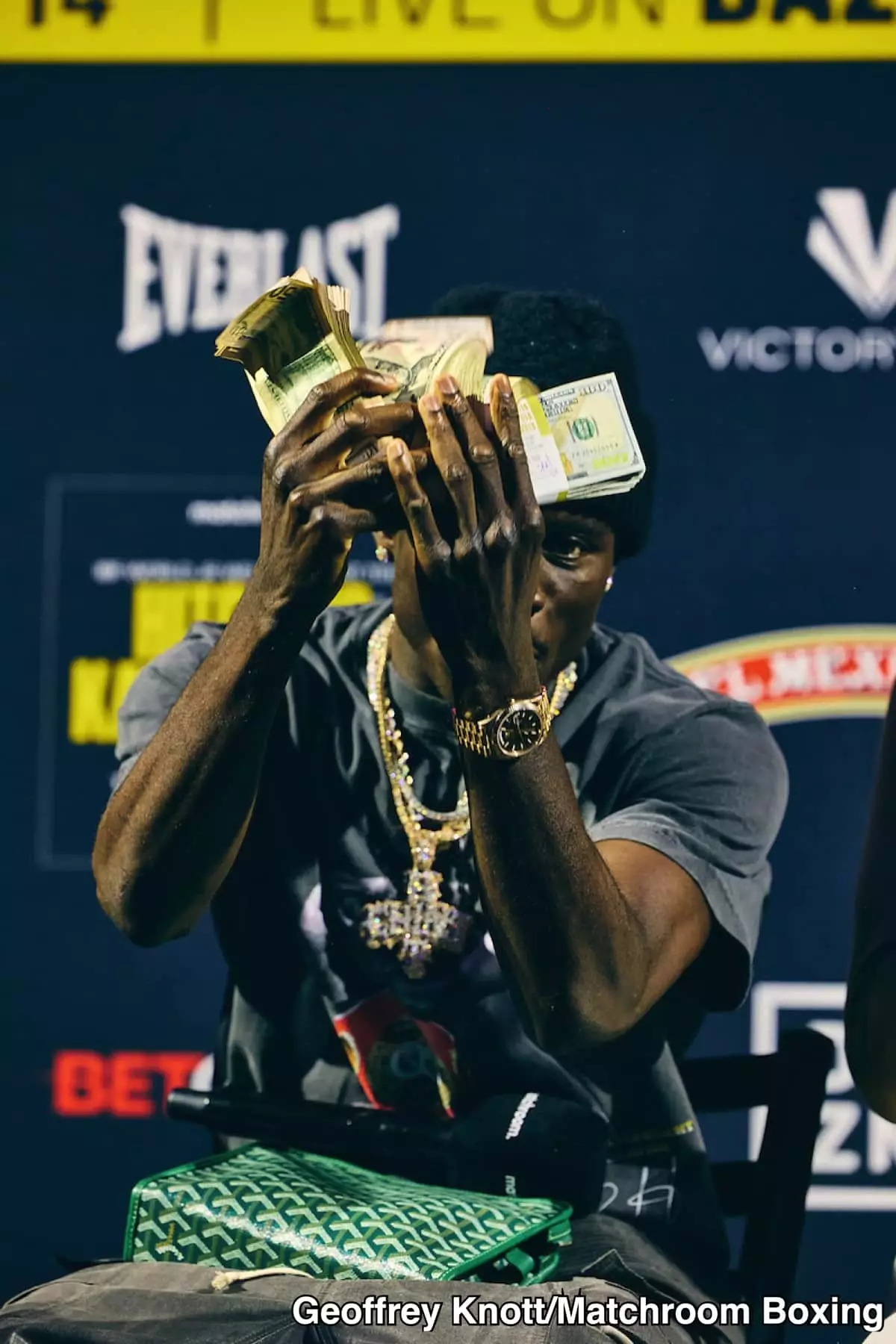In the fiercely competitive world of boxing, fighters are often labeled according to their style, sometimes to their detriment. Richardson Hitchins, the reigning IBF champion in the 140-pound division, finds himself at the center of such a narrative. Recently, prominent boxing figure Turki Alalshikh has expressed his disdain for fighters deemed “runners,” provoking a heated response from the defending champion. Hitchins finds this characterization both unfair and misleading, especially as he prepares for a high-stakes bout against former lightweight champion George Kambosos Jr. The boxing community eagerly awaits to see if Hitchins can shatter this stereotype in a bout loaded with expectations.
Confidence Under Fire
During the lead-up to the fight, Hitchins has been vocal in his disapproval of the “runner” label. He vigorously defends his approach, declaring, “I don’t ever run.” This insistence reveals a fighter who not only wants to dispel misconceptions but also aims to assert his dominance in the ring. He promises that he will not shy away from physical confrontation; rather, he intends to be “right in front of” Kambosos, showcasing his intent to engage in a brawl rather than dance around the ring. The bold proclamation indicates Hitchins’ confidence and desire to provide an exciting spectacle for boxing fans, a welcome shift from the stigma attached to his previous performances.
The Tactical Standoff
Hitchins’ willingness to engage with Kambosos stands in sharp contrast to the fear often exhibited by fighters tagged as “runners.” Such a decision can radically alter the dynamic of the match. Kambosos, known for his toughness and competitiveness, may be waiting for an opportunity to exploit any hesitation from Hitchins. Yet, if Hitchins is true to his word, his strategy may allow him to dominate the exchanges, keeping Kambosos on the back foot. Fans anticipate that this bout could transform into a thrilling display of skill, where both fighters must prove their mettle—not just according to their styles, but their resolve.
The Implications for Boxing’s Entertainment Value
What is particularly compelling about this upcoming confrontation is the discourse surrounding it. Alalshikh’s comments about “boring fighters” connect to a broader conversation about the necessity of entertainment in boxing. Hitchins’ rejection of the “runner” label serves as a reminder that fighters have multifaceted strategies and should not be pigeonholed. If he can succeed in engaging Kambosos while simultaneously executing tactical accuracy, Hitchins will not only redefine his identity but also underscore the significance of action-oriented boxing.
The Stakes and the Stakes
For Richardson Hitchins, this fight represents more than just defense of his title; it is an opportunity to challenge preconceived notions and prove that he can deliver thrilling fights. Should he go through with his proclamation and confront Kambosos head-on, both fighters will not only be battling for the championship but also for their reputations—a matter that, especially in boxing, significantly shapes legacies. As they stand on the cusp of combat, the anticipation continues to mount for what promises to be a memorable showdown reshaping how we perceive boxing styles and the narratives that accompany them.


Leave a Reply